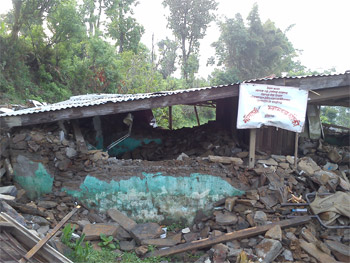Sustaining Progress In Maternal and Child Health in Nepal

Sustaining Progress In Maternal and Child Health in Nepal
Nepal has made a substantial progress in reducing maternal and child mortality since 1990. With limited resources, the Nepal Government has strived to maintain health services, until the country was hit by a 7.9 Richter scale earthquake on April 25, 2015, followed by another 7.4 Richter scale quake within three weeks. The resulting damages are massive, with 600,000 people displaced, 750,000 houses destroyed, 8,600 deaths, and 17,000 people injured. The economic cost is estimated to be US$5–10 billion.
Curtin University is concerned with the sustainability of maternal and child healthcare following the earthquake. The latest data showed that maternal and child health services are severely disrupted. The country's only tertiary maternity hospital in Kathmandu is damaged, and 90 per cent of health facilities in affected districts are non-functional. An estimated 126,000 pregnant women are now at risk of adverse maternal outcomes, while two million women and girls of reproductive age could be affected. According to Child Health Division, 90 per cent of health facilities are destroyed in the epicentre Gorkha. Similarly, damages to health facilities exceed 50 per cent in Nuwakot district and 85 per cent in Dhading district, disrupting antenatal, delivery and postnatal care in the catchment areas.
Latest information from the Family Health Division confirmed that 19 out of 21 birthing centres in Dolakha district and 18 out of 21 birthing centres in Sindhupalanchok district are nonoperational.
Nepal Prime Minister announced that relief, rehabilitation and reconstruction will be the Government's priority, which implied possible diversion of the limited health budget to these areas.
Evidence from previous disasters in the world have shown a decrease in access and use of prenatal care, with increased rates of miscarriage, premature birth, intrauterine growth, low birthweight, and unwanted pregnancies in the aftermath of disaster. Interruption of breastfeeding practice is a major risk factor for adverse infant health. For example, after the 2006 earthquake in Indonesia, increase in formula feeding from 32 per cent to 43 per cent was associated with a higher incidence of childhood diarrhoea.
This situation will be replicated in Nepal unless unregulated use and donation of infant formula are discouraged. The network of outreach clinics should be re-instated, and skilled health workers should be encouraged to attend home deliveries while birthing centres are being rebuilt. The high rate of routine immunisation must be preserved at >90 per cent. As long as the cold chain is maintained, this is feasible since immunisations are mostly done in outreach clinics which require little infrastructure support.
This was originally published in The Lancet accessible via http://www.thelancet.com
MORE



